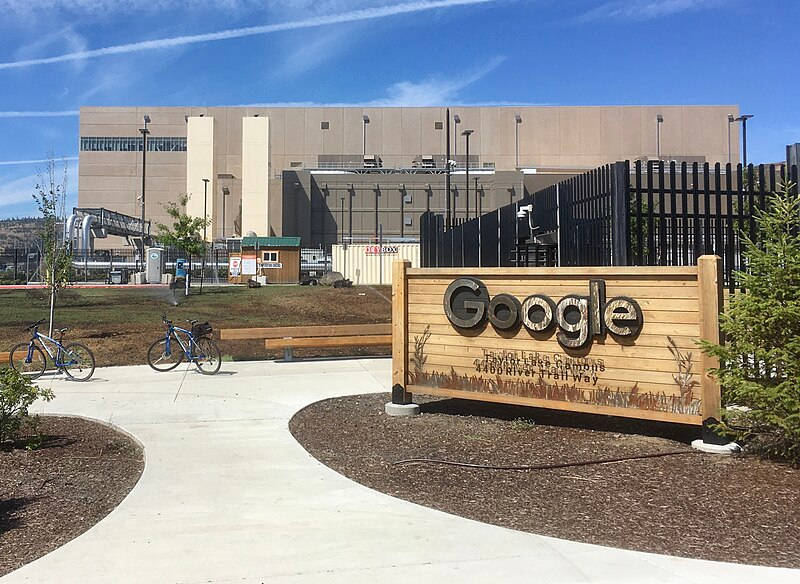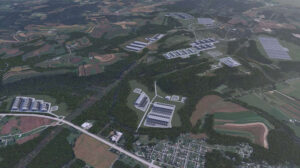Fleet says they’ll design your new data center for you, build it according to your design, or have their engineers sit down with your engineers to design it together.

Tract Capital Management was already in the business of helping data center operators find shovel ready land with access to power through its land management business, something it’s been doing since 2022. Now the company has taken that several steps further by launching Fleet Data Centers, which not only finds land with available power and cuts through any the regulatory red tape, but also metaphorically hangs out a “will build to suit tenant” sign.
The creation of Fleet Data Centers was announced a couple of weeks back, along with an announcement that Chris Vonderhaar has been put in charge as the company’s president. He’ll be working with the parent company’s CEO and managing partner, Grant van Rooyen, which is something of a reunion for the pair who first worked together back in the 1990s when both of them were getting started.
“We were learning, is what we were doing,” Vonderhaar said matter-of-factly in a recent interview with FOSS Force. The two worked together for a decade or so as part of Omaha-based Kiewit Corporation’s construction of a nationwide fiber optic network that was later spun off as Level 3 Communications, headquartered in Broomfield, Colorado.
Vonderhaar eventually ended up at Century Link after it acquired Level 3, which he left in 2008 as vice president of customer media operations. After that he spent 13 years at Amazon Web Services, leaving in 2023 as VP of AWS Data Center Community. From there he went to Google Cloud Platform where he spent a year as VP of Demand and Supply Management.
The new venture finds Vonderhaar and van Rooyen working together in a venture that will supply turnkey solutions for data center operators, primarily hyperscalers, and which puts Vonderhaar in a situation where his experience at AWS and GCP should be useful.
From Zero to Sixty
“Fleet’s campuses are going to be master planned to start at hundreds of megawatts inside of a single fence line, scaling up to potentially multiple gigawatts in some campuses,” Vonderhaar said.

“When I was at AWS and at Google as a buyer, what I was looking for was a surety and predictability of supply over the long term,” he added. “It’s really hard and expensive and risky to try and knit together small 50 megawatt, 100 megawatt, 200 megawatt campuses in multiple places, each of which has to have their own operations teams, and each of which has to be networked together. That is complex and burdensome, when I can find a campus where I can deploy one to twenty or more data centers, which is something new and different.”
So Vonderhaar’s looking for parcels of land that meet all of the necessary zoning requirements and which have gigawatts of available power on which Fleet can build to suit.
According to the company’s printed PR, it intends to build some of the largest data center campuses on the planet, combining gigawatt-level capacity with a campus-based commercial model that it says will give its customers “the ability to confidently secure capacity to meet their high-side demand forecasts” — which seems to mean data centers that aren’t going to be easily outgrown.
The solutions they’re contemplating aren’t one-size-fits-all, but will be designed and built in collaboration with customers to integrate their existing data center fleets and with the latest design innovations and new technologies.
“We haven’t broke ground yet on facilities,” he said. “At this point I’m building a team. We’re building a design. We are engaged with customers on where we’re going to break ground and build first. We have a target market that we’re going to start out in, based on the earliest delivery of electrons. It’s gonna be in Nevada, in and around Reno. That’s where we have the earliest delivery of utility power.”
After that, said Vonderhaar, “it comes fast and furious. You get into late 2026 through 2029, that’s where Fleet will have multiple campuses in development, and it’ll still only be a small fraction of Tract’s overall land bank.”
Fleet’s Leasing Model
The company’s model is to build data centers to spec and then lease them. Although selling them outright isn’t out of the question, Vonderhaar thinks the lease option will be more attractive to customers. For starters, that puts the data center’s building expenses in the OpEx instead of CapEx column, which generally makes accountants happy. Another advantage for the customer is that this means that in most cases Fleet will be taking care of the facilities’ maintenance, which means not only the building structure, but the wiring, backup power, HVAC, janitorial services… the whole enchalada.
This frees the data center operators to focus completely on the facilities computer tech, which includes not only the racks of equipment, but other data center necessities such as networking.
“Since we’re in the design, we’re doing the construction, we’re doing the commissioning, and we’re also going to do the operations,” he said. “We’re accountable. We’re one throat choke, if you will, on all of that, end to end.”
Fleet Data Centers plans to be flexible enough to offer other options besides long term leases in which Fleet performs all of the maintenance, however. Vonderhaar points to cases in which the data center operator has them construct a facility using specifications supplied entirely by them.
“If it’s a customer’s design there may be an option or a choice where they’re leasing the physical infrastructure that we hand off to them, but because it’s their design with their operational playbook they may want their own people to operate that,” he said. “So we have a lot of commercial flexibility on how we can set this up to be a seamless addition to their fleet.”
Christine Hall has been a journalist since 1971. In 2001, she began writing a weekly consumer computer column and started covering Linux and FOSS in 2002 after making the switch to GNU/Linux. Follow her on Twitter: @BrideOfLinux






